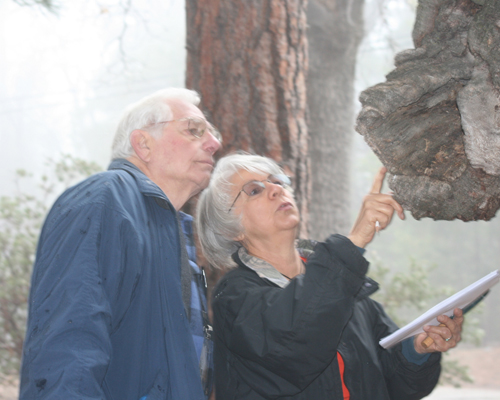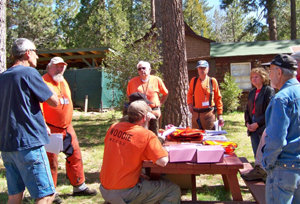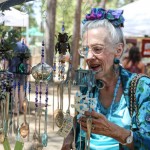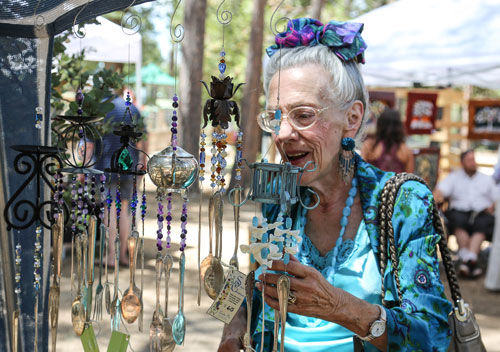
Mountain Communities Fire Safe Council has begun dispatching teams of volunteers trained in spotting signs of Goldspotted oak borer infestation. Executive Director Edwina Scott said the teams received their survey sheets on Friday, April 5, and then began responding to inspection requests from private landowners.
Inspection teams formed primarily from FSC’s Woodies component received Goldspotted oak borer spotting training from key scientists involved with mapping the spread of the highly invasive oak predator. FSC presently has five inspection teams.
On Monday, April 8, a team composed of Doris Lombard and Ron Perry inspected a property in Pine Cove. The property owner had attended a
January Goldspotted oak borer information meeting held at Town Hall. There she had signed up to have her oak-studded property inspected. With flashlights, magnifying glasses, markers, paper clips (to measure depth of exit holes) and detailed survey sheets, Lombard and Perry inspected two oaks on the homeowner’s property. The inspection revealed possible infestation when the team discovered characteristic D-shaped exit holes on both trees.

The morning of the inspection was very foggy, with heavy drizzle, making inspection difficult. Lombard and Perry plan to return to inspect additional oaks on this homeowner’s property.
The next step in the FSC protocol is for scientists to visit trees the FSC teams have identified as Goldspotted oak borer candidates. Then scientists, during subsequent visits, would determine whether the trees are infested with the beetle. Part of that process may involve chipping bark to see if there is evidence of characteristic staining and whether larvae are present. DNA laboratory confirmation may also be required for a positive identification.
If scientists determine the suspect trees are infested with Goldspotted oak borer, Pine Cove would be added to the expanding list of “micro-zones” in which the insect has already been positively confirmed. Those zones presently include Highway 243 from Mountain Top Liquor to La Bella Montagna Italian Restaurant, the area around Town Hall, and around the American Legion Post on Marian View Drive.
Once a positive Goldspotted oak borer identification is made, homeowners can have the tree removed at no cost through one of two means — by Southern California Edison if the oak is near its power lines, or through federal grants which pay 100 percent for removal of infested oaks. Removing an infested tree is presently the surest way to prevent further Goldspotted oak borer spread.
Landowners can schedule an inspection by calling the GSOB hotline (951) 659-8328. Information that would help a landowner make a preliminary inspection and assessment can be found on www.gsob.org.













